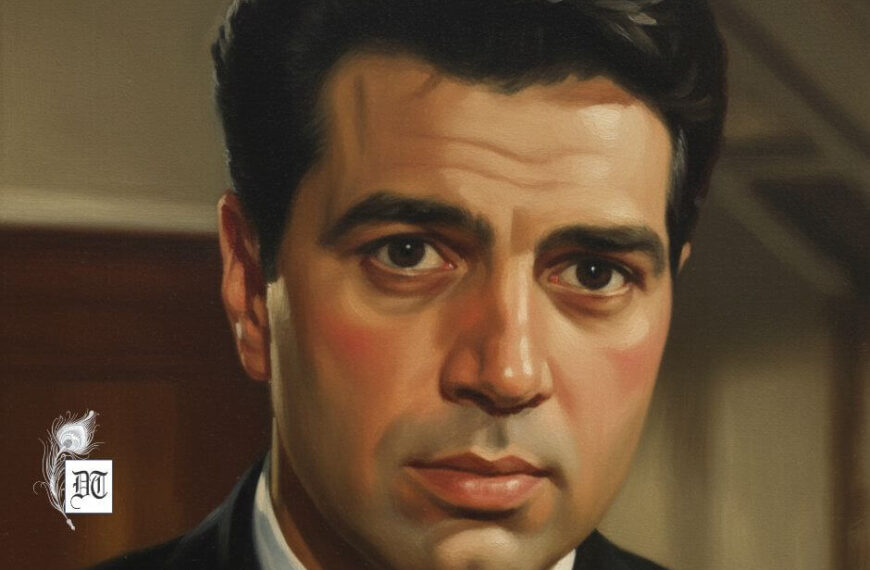
Tagore wanted to defend the freedom he enjoyed in his family, for all humanity. He remained firmly opposed to colonial education that aimed at material prosperity. He believed that only education could promote the freedom of humans and made a real effort to carry out his educational mission almost unaided and alone. He was fully conscious of child psychology and he took necessary measures to foster the cognitive and emotional development of his students, says, Dr Gauranga, as Special Feature. A Different Truths exclusive.
Rabindranath Tagore’s family was profoundly influenced by Raja Rammohan Roy who gained considerable knowledge of western civilisation. Rammohan Roy helped Maharishi Debendranath Tagore to become free from rigid social conventions ‘bred in the inertia of the racial mind’. Rabindranath from his boyhood wanted to defend the freedom he enjoyed in his family, for all humanity. He elucidated, ‘We in our home sought freedom of power in our language, freedom of imagination in our literature, freedom of soul in our religious creeds and that of mind in our social environment’. The ideal ambiance of Tagore’s home made him positive about education that can promote real freedom in the world.
 Rabindranath could not receive any education that aimed at material prosperity. He was sent to a colonial school when he was young. He had a predilection for natural surroundings. So the school environment seemed to him ‘dead and unsympathetic, disharmonious and monotonously dull’. In the cheerless surroundings, Tagore’s mind could not accept anything from his teachers who were like ‘living gramophones’. He refused to respond to the ‘mechanical pressure’ of the teaching method and left school to learn outside the classes. Attaining ‘fullness by sympathy’ was considered important to Tagore. In his essay My School, he contended, ‘The highest education is that which does not merely give us information, but makes our life in harmony with all existence.’
Rabindranath could not receive any education that aimed at material prosperity. He was sent to a colonial school when he was young. He had a predilection for natural surroundings. So the school environment seemed to him ‘dead and unsympathetic, disharmonious and monotonously dull’. In the cheerless surroundings, Tagore’s mind could not accept anything from his teachers who were like ‘living gramophones’. He refused to respond to the ‘mechanical pressure’ of the teaching method and left school to learn outside the classes. Attaining ‘fullness by sympathy’ was considered important to Tagore. In his essay My School, he contended, ‘The highest education is that which does not merely give us information, but makes our life in harmony with all existence.’
Rabindranath Tagore was basically a poet and he had to work strenuously to establish an ashram school at Santiniketan in 1901. He wrote in his lecture ‘My School’ about the commencement of his school, ‘I selected a beautiful place, far away from the contamination of town life. … And there I got a few children around me and taught them. I was their companion, I sang to them. I composed some musical pieces, some operas, and plays, and they took part in those plays…. My idea was that education should be a part of life itself and must not be detached from it and be made into something abstract.’
Rabindranath was fully conscious of child psychology and he took necessary measures to foster the cognitive and emotional development of his students. He believed in the active subconscious mind of the children with whom he engaged in activities that could stimulate their minds and awaken interests in different things. Tagore explained, ‘I tried to arouse their interests in all things, in nature’s beauty and the surrounding villages and also in literature, through play-acting, through listening to music in a natural manner, not through merely class teaching’.
This is amazing to note that most of the Gitanjali songs were written in the ashram and sung to students who learned them with pleasure. Tagore translated Browning’s drama ‘Luria’ into Bangla and this was staged in the school. The boys acted their parts so wonderfully that the audience was struck by their performances. Rabindranath appreciated the effort of Satish Chandra Roy, one of the school teachers, who used to read to the students Shakespeare and Browning and take them to the forest in springtime to make them relish the beauty of some good poems. Unlike an orthodox school, the ashram was a place where Tagore tried to strengthen a community spirit. The teachers lead a community life and closer  cooperation between students and teachers was ensured during sports and festivals. Tagore recounted, ‘It was not like a cage in which the birds are fed from the outside, but it was like a nest which students themselves co-operated in building up with their own life, with their love, with their daily works and their plays.’
cooperation between students and teachers was ensured during sports and festivals. Tagore recounted, ‘It was not like a cage in which the birds are fed from the outside, but it was like a nest which students themselves co-operated in building up with their own life, with their love, with their daily works and their plays.’
In the beginning, people were pessimistic about the endeavour that Tagore made to bring up the children in the ashram. They gradually grew confident and sent their daughters to obtain an education in the poet’s school. The co-education, a novel system in India was managed effectively by Tagore. Co-education helped the students to learn about mutual respect and support.
Rabindranath always tried to invite lecturers and visitors from Europe and the Far East so that a healthy relationship could be cultivated between the foreigners and students. He wrote, ‘My idea is that the mind should find its freedom in every respect, and I am sure that our children have through their early training freedom from the barriers of country and race and creeds and prejudices.’
Tagore placed much importance on Bangla, the ‘mother tongue’ through which the students could learn with Ananda. Of course, he did not contract the scope of medium for delivering education. According to Tagore, the purpose of education is ‘to live a complete life.’ He observed that modern civilisation was ‘drawing away everything from the villages to the pampered towns.’ That is why he felt an urge to help the neighbouring villages where primitive people lived. With this end in view, he started to give the students training to help the villagers.
The ultimate goal that Tagore wanted his students to achieve was ‘freedom of mind’. In his essay, My School Tagore pronounced,’ I believe that the object of education is freedom of mind which can only be achieved through the path of freedom ── through freedom has its risk and responsibility as life itself has.’
Photos from the Internet
#Tagore #SchoolOfTagore #MySchool #SchoolingPhilosophyOfTagore #TagoreAndShantiniketan #EducationAndTagore #TributeToTagore #DifferentTruths







 By
By
 By
By
No doubt it’s a marvelous writing.Got to know a lot of new things about Rabindranath Tagore.Along with his geniusness for poem and other writings,he was a great teacher,who knows the real value of education and wanted to spread the real education among his fellow students.
Thanks to Dr.Gauranga for introducing us with Tagore thoughts.